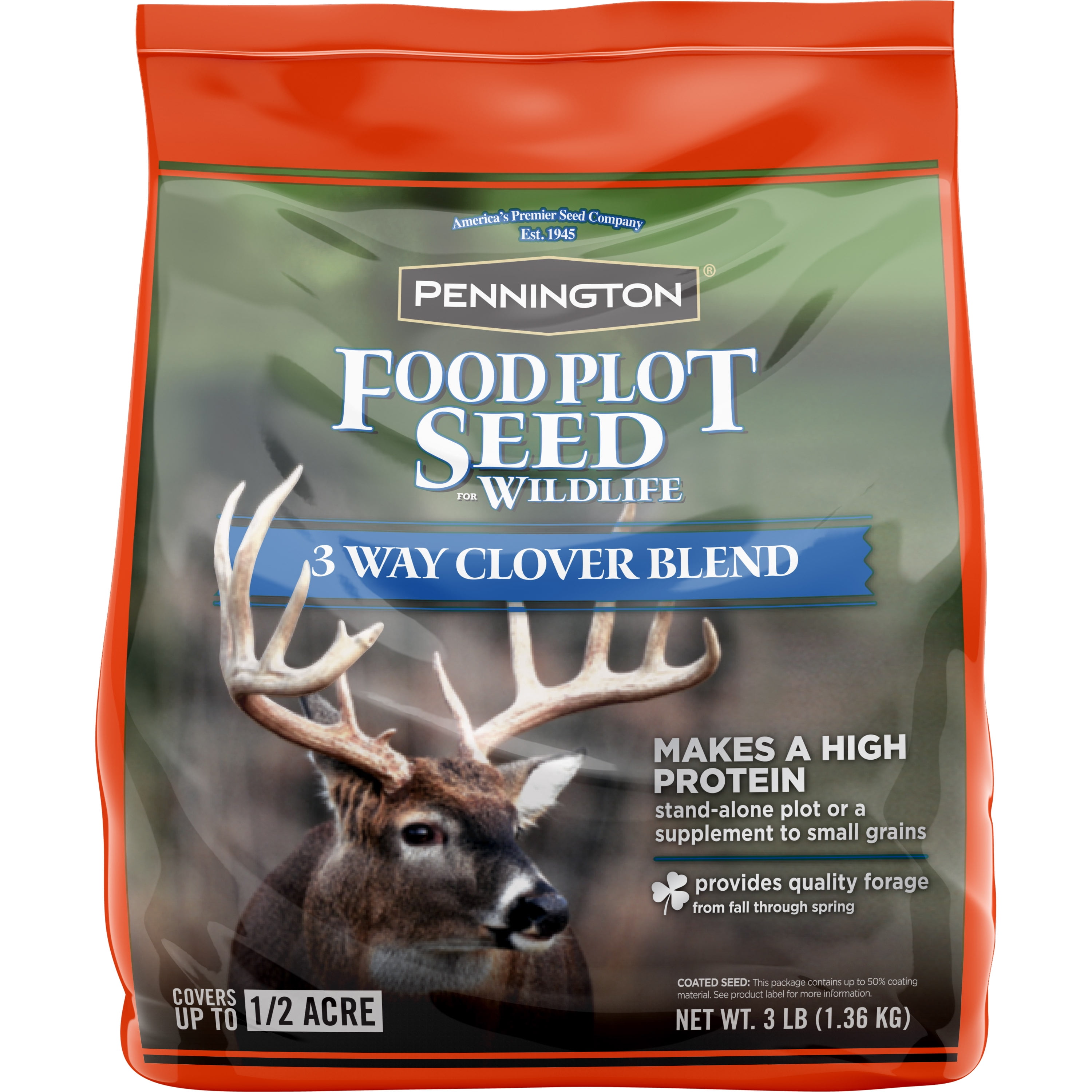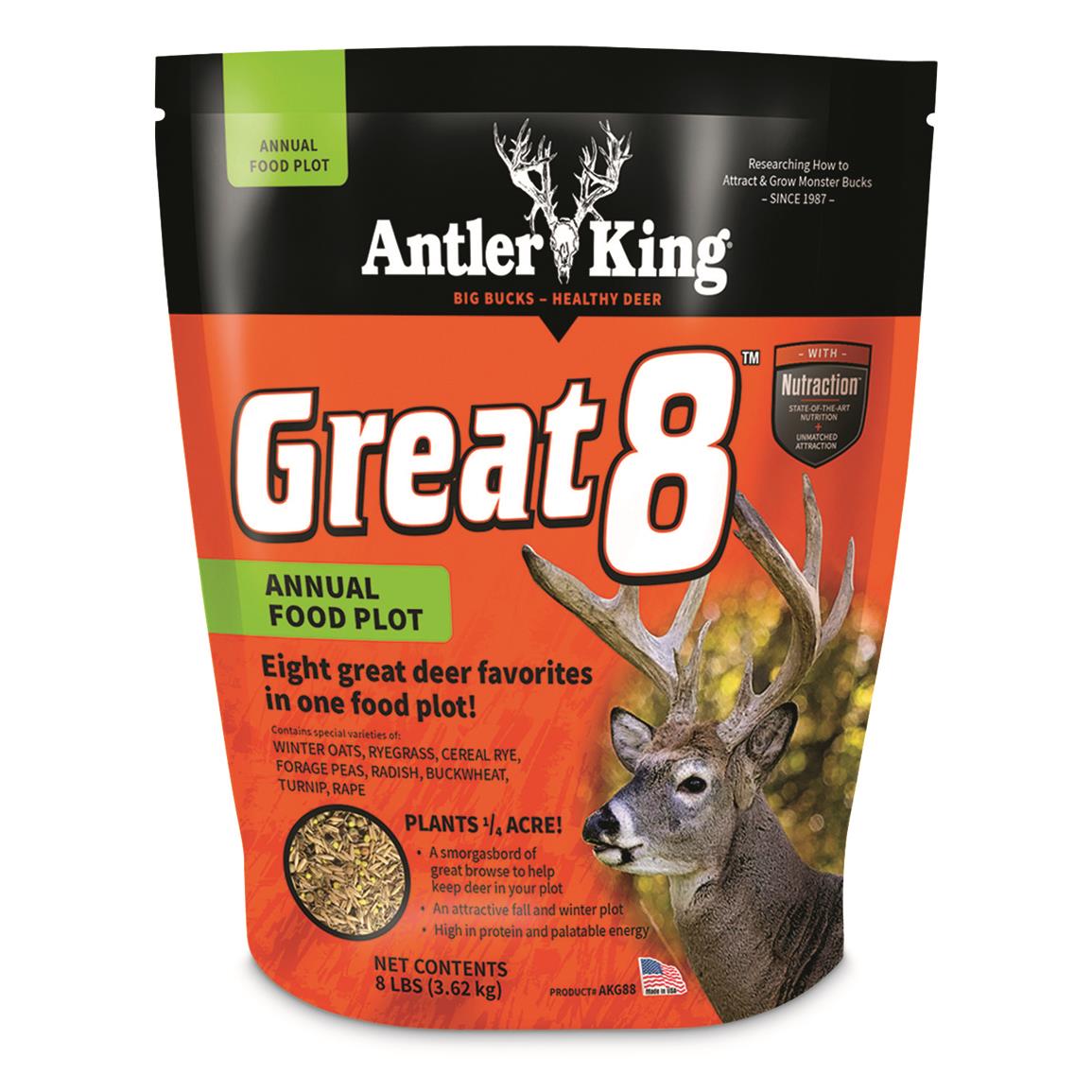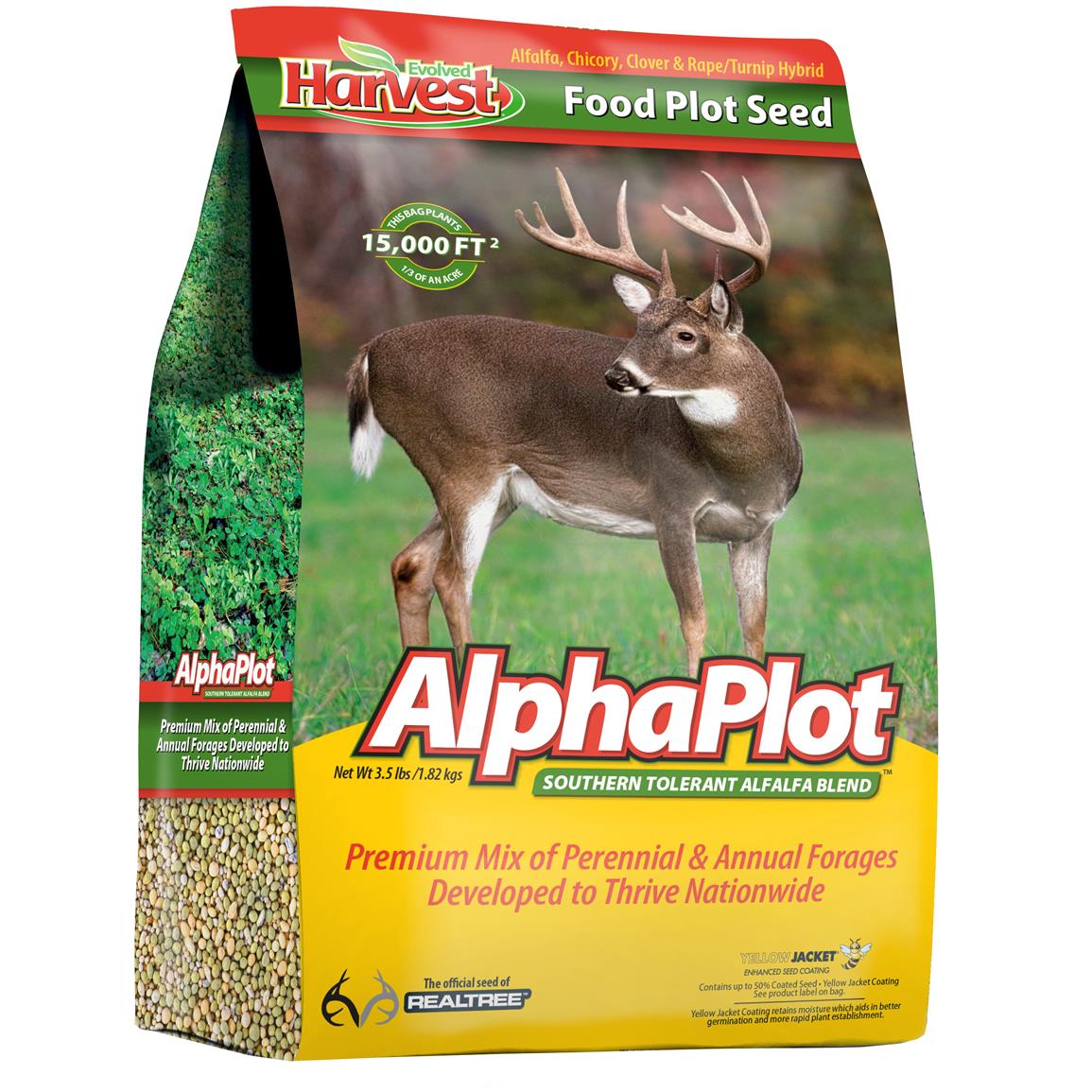Meals plot seeds are the cornerstone of wildlife administration, offering important vitamin and habitat for a variety of species. This complete information will delve into the categories, planting strategies, advantages, and issues for choosing and managing meals plot seeds, empowering you to create thriving wildlife havens.
From choosing the proper seed varieties to designing efficient meals plots, this information will equip you with the data and methods to determine and preserve flourishing wildlife habitats.
Advantages of Meals Plot Seeds

Meals plot seeds present a spread of dietary advantages for wildlife, making them a vital part of habitat administration. These seeds are wealthy in carbohydrates, proteins, fat, and important nutritional vitamins and minerals, offering animals with the required vitamins for development, copy, and general well being.
By establishing meals plots, landowners can complement pure meals sources and enhance the dietary standing of wildlife populations.
Habitat Enchancment and Animal Attraction
Meals plots additionally play an important position in habitat enchancment. They create concentrated areas of high-quality meals, which attracts a wide range of wildlife species. Deer, turkeys, and different sport animals are drawn to meals plots, as they supply a dependable supply of nourishment all year long.
Moreover, meals plots can function cowl and nesting websites for birds and different small animals, enhancing the general biodiversity of the realm.
Financial and Leisure Advantages
Meals plots supply each financial and leisure advantages to landowners and hunters. By establishing meals plots, landowners can enhance the carrying capability of their property, resulting in bigger and more healthy wildlife populations. This can lead to elevated searching alternatives and income from searching leases.
Moreover, meals plots present a novel leisure expertise for hunters, permitting them to look at and work together with wildlife in a managed atmosphere.
Concerns for Deciding on Meals Plot Seeds
Choosing the proper meals plot seeds is essential for maximizing the advantages they provide to wildlife. A number of elements must be thought-about to make sure optimum seed choice, together with the goal wildlife species, soil situations, and local weather of the realm.
The kind of wildlife that will probably be using the meals plot must be the first consideration when choosing seeds. Completely different species have particular dietary preferences and dietary necessities. As an illustration, deer favor high-protein forage equivalent to clover and alfalfa, whereas turkeys desire seeds and grains like corn and soybeans.
Soil Situations
The soil situations of the planting web site play a significant position in seed choice. The pH degree, drainage, and soil texture can considerably influence seed germination and plant development. Acidic soils could require the addition of lime to lift the pH, whereas poorly drained soils might have drainage enhancements to stop waterlogging.
Local weather
The local weather of the realm the place the meals plot will probably be established also needs to be thought-about. Temperature, precipitation, and daylight availability can affect seed germination and plant development. For instance, warm-season vegetation like soybeans and sorghum are finest suited to areas with lengthy, scorching summers, whereas cool-season vegetation like clover and wheatgrass thrive in cooler climates.
Administration of Meals Plots

Sustaining and enhancing meals plots require correct administration strategies to make sure optimum development and yield. These strategies embody mowing, weed management, soil testing, crop rotation, and illness prevention.
Mowing
- Mowing helps management weeds and promote tillering, leading to denser development and elevated forage manufacturing.
- Mow at a peak of 6-8 inches to keep up a wholesome cover whereas permitting daylight penetration.
- Mow often, particularly through the early levels of development, to stop weeds from establishing.
Weed Management
- Weeds compete with meals plot vegetation for vitamins, water, and daylight, lowering yields.
- Use selective herbicides to regulate weeds with out harming the specified vegetation.
- Apply herbicides based on the producer’s directions and keep away from spraying throughout windy situations.
Soil Testing, Meals plot seed
- Soil testing supplies invaluable details about soil fertility and nutrient ranges.
- Based mostly on soil check outcomes, apply acceptable fertilizers to right nutrient deficiencies and enhance soil well being.
- Conduct soil exams often to watch soil situations and regulate administration practices accordingly.
Crop Rotation
- Rotating crops prevents illness buildup and improves soil well being by diversifying plant species.
- Plant several types of crops in the identical space in a sequential order to keep away from planting the identical crop repeatedly.
- For instance, rotate between legumes (e.g., clover, beans), grasses (e.g., corn, wheat), and brassicas (e.g., turnips, kale).
Illness Prevention
- Ailments can considerably influence meals plot yields and plant well being.
- Use disease-resistant sorts of vegetation and observe good sanitation to stop illness outbreaks.
- Take away diseased vegetation promptly and eliminate them correctly to stop the unfold of an infection.
Designing Meals Plots
Designing efficient meals plots requires cautious consideration of the goal wildlife species, their dietary wants, and the precise habitat situations. By incorporating native vegetation, cowl crops, and a wide range of meals sources, landowners can create meals plots that present year-round sustenance and improve wildlife populations.
Incorporating Native Vegetation
Native vegetation are well-adapted to the native local weather and soil situations, offering a pure meals supply for wildlife. They typically produce fruits, seeds, and browse which might be excessive in vitamins and important for particular species. For instance, deer desire native browse species equivalent to blackberry, sumac, and serviceberry, whereas turkeys profit from native grasses and forbs that present bugs and seeds.
Using Cowl Crops
Cowl crops are non-harvested vegetation that present meals and canopy for wildlife whereas enhancing soil well being. They are often planted in between meals plot seasons to suppress weeds, stop erosion, and appeal to useful bugs. Widespread cowl crops for meals plots embody clover, alfalfa, and brassicas, which give a high-protein meals supply for deer, rabbits, and different wildlife.
Making a Number of Meals Sources
Providing a wide range of meals sources inside a meals plot ensures that wildlife have entry to a balanced weight-reduction plan all year long. This will embody planting a mixture of grasses, legumes, and forbs that present totally different dietary profiles and appeal to a wider vary of species.
For instance, a meals plot designed for deer and turkeys would possibly embody a mixture of clover, alfalfa, corn, and sunflowers, offering a mixture of protein, carbohydrates, and fat.
Examples of Profitable Meals Plot Designs
- Deer Winter Meals Plot:A mixture of native browse species (e.g., blackberry, sumac), cowl crops (e.g., clover, alfalfa), and high-energy meals sources (e.g., corn, soybeans) supplies sustenance through the lean winter months.
- Turkey Brood-Rearing Meals Plot:A mix of native grasses and forbs (e.g., clover, chicory), cowl crops (e.g., brassicas), and insect-attracting vegetation (e.g., sunflowers) supplies meals and canopy for hens and poults through the spring and summer season.
- Upland Recreation Fowl Meals Plot:A mixture of native grasses, legumes, and forbs (e.g., millet, sunflower, lespedeza) supplies meals and canopy for quail, pheasants, and different upland sport birds.
Seed Sources and Availability

Figuring out respected seed suppliers and sources is essential for buying high-quality meals plot seeds. Quite a few corporations specialise in offering seeds particularly tailor-made for meals plots, providing a variety of species and blends. Researching and evaluating seed suppliers is beneficial to make sure their reliability, seed high quality, and customer support.
Seed Availability and Pricing
Seed availability varies relying on the species and area. Some widespread species are extensively accessible, whereas others could require specialised suppliers or on-line retailers. Seed pricing can fluctuate considerably based mostly on elements equivalent to species, seed depend, and packaging dimension.
Buying seeds in bulk can typically end in price financial savings.
Deciding on High quality Seeds
Selecting high quality seeds is crucial for profitable meals plot institution. Search for seeds with excessive germination charges, indicating the share of seeds that can efficiently germinate and develop. Illness resistance can also be an essential consideration, as it will possibly stop crop loss resulting from pathogens.
Moreover, contemplate the maturity dates of various species to make sure a staggered meals supply all year long.
Examples of Meals Plot Seed Mixes
Meals plot seed mixes are particularly designed to supply optimum vitamin and appeal to desired wildlife species. These mixes include a wide range of seed varieties, every providing distinctive advantages. The desk under showcases widespread meals plot seed mixes, together with their seed composition, planting charges, and goal wildlife species.
When choosing a meals plot seed combine, contemplate the area and local weather of your location. Completely different mixes are tailor-made to thrive in particular environmental situations. Seek the advice of with native specialists or confer with on-line sources to find out probably the most appropriate combine to your space.
Seed Combine Examples
| Seed Combine | Seed Composition | Planting Fee | Goal Wildlife |
|---|---|---|---|
| Deer & Turkey Combine | Soybeans, Corn, Chicory, Clover | 100-150 lbs/acre | Deer, Turkey |
| Upland Fowl Combine | Sorghum, Sunflowers, Millet, Partridge Pea | 50-75 lbs/acre | Bobwhite Quail, Pheasant |
| Heat-Season Forage Combine | Cowpeas, Lablab, Sunflowers, Sorghum | 100-150 lbs/acre | Deer, Turkey, Dove |
| Cool-Season Forage Combine | Clover, Alfalfa, Wheat, Oats | 50-75 lbs/acre | Deer, Elk, Rabbits |
| Pollinator Combine | Sunflowers, Purple Coneflower, Butterfly Weed, Goldenrod | 25-50 lbs/acre | Butterflies, Bees, Birds |
FAQ: Meals Plot Seed
What are the commonest sorts of meals plot seeds?
Widespread meals plot seeds embody clover, alfalfa, chicory, brassicas, and soybeans, every providing distinctive dietary advantages and attracting totally different wildlife species.
When is the most effective time to plant meals plot seeds?
The optimum planting time for meals plot seeds varies relying on the area and local weather, however typically falls within the spring or fall when temperatures are reasonable and soil moisture is satisfactory.
How do I select the best meals plot seed combine for my wildlife species?
Think about the precise dietary wants and preferences of the wildlife species you want to appeal to. Completely different seed mixes are tailor-made to draw deer, turkey, quail, and different wildlife.

